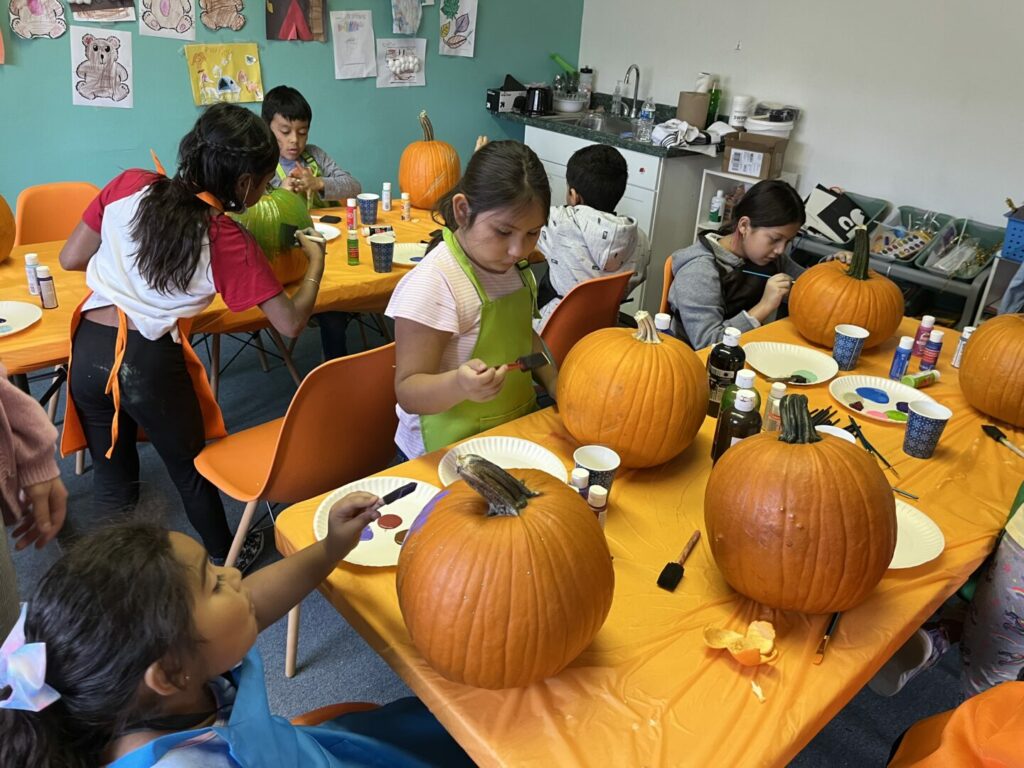By Kurt Rietema
This morning was the first hard frost of the year. My boys had been waiting for this moment for months. It meant that we could light a fire in our wood burning stove and huddle around it together in the dark hours of an October dawn. There they were, lined up in a row silhouetted by an orange glow, flames licking their backs like a skewer of grocery store rotisserie chickens. It doesn’t make any sense really. The onset of cold comes as unwelcome news to most of us. Cold means pulling out window AC units, blowing out irrigation lines, and postponing a much-needed car wash every week until spring fearing snowfall would make it all in vain. Nevertheless, I shared my kids’ anticipation.
All through the summer I’d squirrel away chunks of felled trees from our neighbors, storing a cache of firewood behind our garage just waiting for this moment when the drop in mercury would inch us towards one another. As the cold draws us together in physical proximity to one another, the magic and mystery of the fire is how it pulls us together emotionally too. That’s what we waited for. Those few minutes in darkness where our bodies and our hearts glow, our spirits align, our intentions calibrate before the sun scatters us in different directions. I suspect the allure is that these moments give us the purest sense of home. Our most embodied experience of belonging. The feeling of family distilled and bottled up. While we never have pretty words for it in the moment, that’s what draws us to the fire.
Last week I got a random text message from a neighborhood kid who used to be a fixture in our ministry in Argentine. “Hey, I was wondering if I would be able to hang out and join back with you and Youthfront at all.” We hadn’t spoken in years. A few days later, we met at Snack Shack KC. He’s 21 now, has a steady job at a pizza shop, his own apartment. What prompted the text? A tragic event in his extended family a month ago exposed a wound inside of himself. He was lonely. In the few short years after high school, life had moved on. Childhood friends either had kids of their own, moved away or made choices he didn’t want to follow. “I wanted some good in my life. I came downtown Argentine a couple weeks back and walked the streets. And I remembered all of the good times and they were here with you doing stuff. I knew this is what I needed.”
Two of our most committed youth volunteers at Snack Shack KC were in earshot of our conversation. I sensed they had a similar gravitational pull. Why did they feel drawn towards this place, towards YF Neighborhood staff like Joe and Phil? Barry, who graduated high school this past spring and worked at Youthfront camp all summer, answered first. “It’s just a positive place to be. I like being here.” Bailey, a middle schooler, expanded on his answer. “It’s so welcoming. This is my home away from home.” Like my boys’ draw to the crackle of kindling in the predawn hours, these young people were in search of the same: a sense of home, the experience of belonging and family.

The afterschool program for elementary students started by YF Neighborhood staff member, Amber Booth has doubled every year since she began learning pods to assist kids through the tumult of remote, pandemic learning. Though New Stanley Elementary keeps directing more students our way because of the trust they have in Amber, the giggling you hear outside the doors tells you there’s no court-ordered coercion keeping them here. It’s actually the kids who are doing the heavy lifting recruiting their friends to join. Rodrigo’s* Grandma showed up early one afternoon to pick him up for a special surprise. While we never unboxed the mystery, Rodrigo told his Grandma the surprise was going to have to wait. He was going to be here until the end. If Isabella*, a 3rd grader, isn’t found scribbling away at thank you cards for Amber, she’s trying to jump up on her lap. Needless to say, some of the kids in the afterschool program have attachment issues.
What might appear as simply reading with kids or homework tutoring to the casual observer, the deep work is tending to the emotional and relational connections that have been nipped, pinched, and severed by a thousand nicks and cuts. Hearing Isabella describe what it used to be like going home after school, you get a sense of the adult-sized responsibilities (and ingratitude) that many kids carry with them. “I would do all of the dishes and I’d clean. And no one even says, ‘thank you.’ The minute I sit down to watch TV someone is already yelling at me.” Yet at the afterschool program, Isabella inches in closer to Amber, craving the physical and emotional warmth, reconnecting once-severed synapses before returning back into her world.
In Hebrews 11, we catch vivid snapshots of the faith of the saints who have gone before. Familiarity with their names and stories has a way of glossing over the real hardships they faced. The list includes a man murdered by his brother, climate migrants who fled famine, foreigners turned slaves, a victim of human trafficking, a prostitute. At one point, the author of Hebrews asks us if we get the point already because he doesn’t even have time to name all of the political persecution, torture, destitution and mistreatment others faced. And why did they endure it all? Because they had a faith that God wanted better for each of God’s children than the world was willing to give. Did they ever receive the better future that God promised them? No, the author answers. They only saw it and welcomed it from a distance. They admitted that for the rest of their time alive on earth they would be foreigners and strangers holding on to the promise that in Jesus Christ, God is forming a new family where everyone belongs. They had faith that God would create the home they always longed for, but never received.
For whatever else we do–whether it’s tutoring kids, providing a safe, welcoming space for middle school kids, designing imaginative social ventures, gathering young people around scripture, or sorting a thousand pounds of sweet potatoes for distribution–perhaps our most important work is something more. The testimonies of these young people suggest that our deepest work is gathering together foreigners and strangers to feel the home we long for, but don’t always receive. We cobble together a new kind of family. And as we move closer to one another around the hearth, we sense the warm embrace of God in a world turned cruel and cold.
*Names of Afterschool Club students were changed to protect their privacy.
About Kurt Rietema: Kurt is the Senior Director of YF Neighborhood at Youthfront. He holds a Master’s in Global Development and Social Justice from St. John’s University. Kurt is also an adjunct at MidAmerica Nazarene University and at William Jewell College. Kurt and his wife Emily live with their sons, Luke, Perkins and Leo in an under-resourced neighborhood of Kansas City, Kansas called Argentine.



